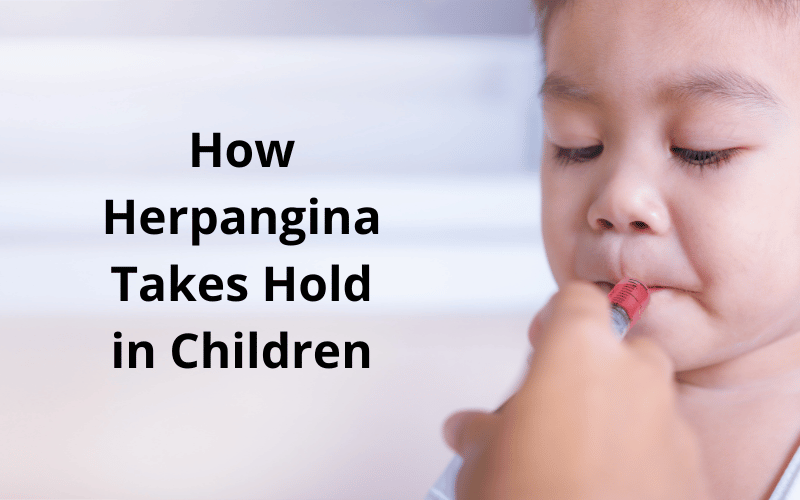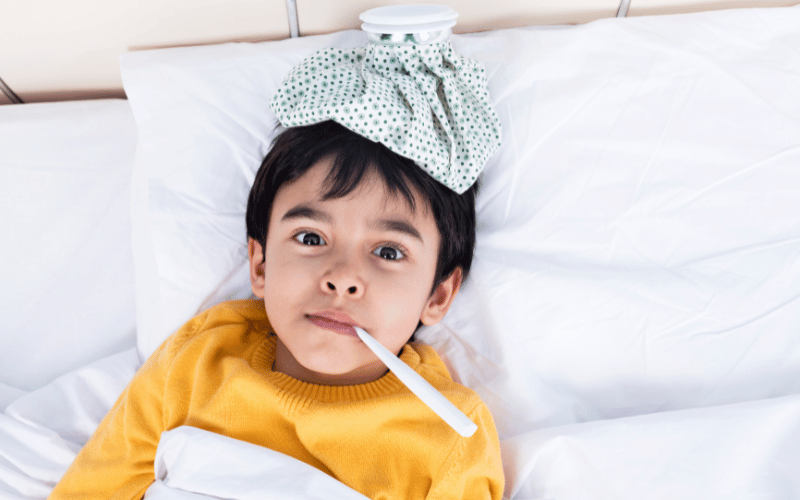Introduction: How Herpangina Takes Hold in Children

As a parent, witnessing your child in any sort of discomfort or pain is one of the most heart-wrenching experiences imaginable. For many, the discovery that their child has herpangina—a common yet deeply unsettling viral illness—comes as a harsh and unexpected reality.
This condition, mainly affecting children, manifests with alarming symptoms that can leave any parent anxious. However, understanding what to look for is the first significant step towards intervention, relief, and recovery for your little one. Knowledge of these symptoms allows you to respond promptly and effectively, significantly reducing the level of distress your child experiences and facilitating a more comfortable and rapid recovery.
1. Sudden Onset of High Fever: The Alarm Bell of Herpangina

A high fever is often the first red flag for parents, signaling that something isn’t right. In cases of herpangina, this isn’t just a mild increase in temperature; we’re talking about a significant and sudden spike that often exceeds 101°F (38°C). This kind of fever doesn’t gradually build up; it hits hard and fast, making it one of the most telling signs that a child might be battling herpangina.
The fever in herpangina is not a standalone symptom. It often comes packaged with chills, a sensation of being unwell (malaise), and excessive irritability in young children. These accompanying features can sometimes cause more distress for the child than the fever itself and may complicate the parent’s ability to comfort their child.
A fever, as alarming as it may be to parents, is the body’s natural way of fighting infection. In the case of herpangina, the high temperature is a response to the viral invasion, specifically caused by a group of viruses known as enteroviruses. Understanding that a fever is the body’s defense mechanism can offer a small, albeit significant, comfort to parents—it’s a sign that your child’s immune system is actively engaging with the virus.
When this fever strikes, parents need to become the first responders. Immediate actions can include administering recommended doses of fever reducers like ibuprofen or acetaminophen (after consulting a healthcare professional), ensuring the child stays hydrated, and keeping them comfortable with cool compresses and a fan. These steps don’t just lower the fever; they actively contribute to your child’s overall comfort and recovery. (1)